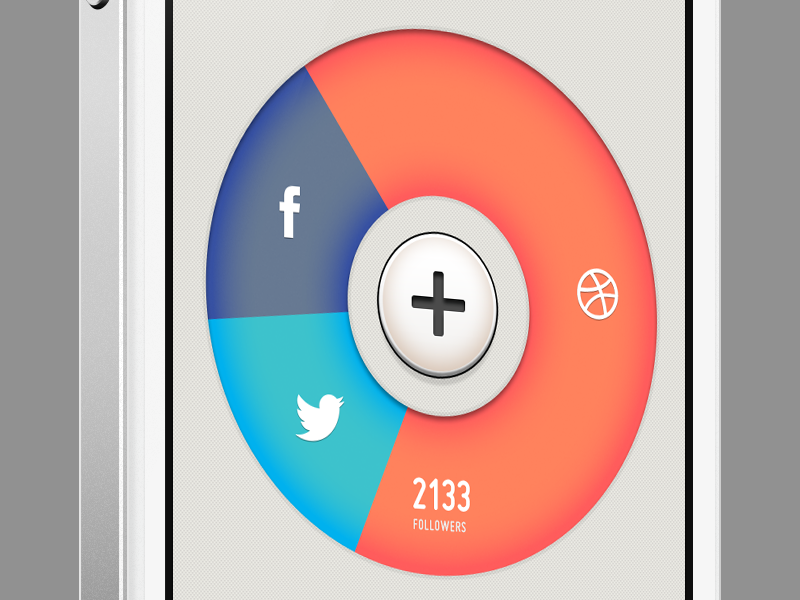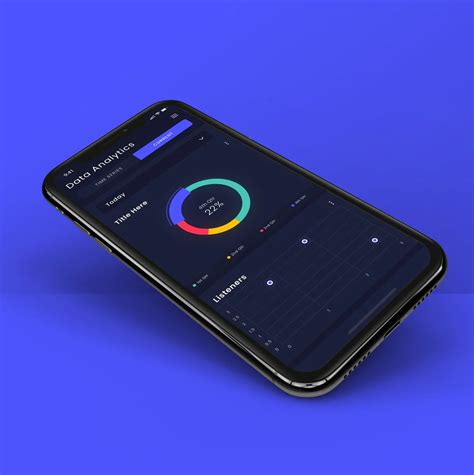In the rapidly evolving digital landscape, User Experience (UX) has emerged as a pivotal factor in determining the success of mobile and web applications. As technology advances and user expectations heighten, designers and developers are continually seeking innovative ways to enhance UX, ensuring that apps are not only functional but also engaging and intuitive. This article delves into the latest UX trends that are reshaping the way users interact with applications, highlighting how these innovations contribute to more seamless and satisfying digital experiences.
The Evolution of UX in Modern Applications
User Experience encompasses all aspects of an end-user’s interaction with a company, its services, and its products. In the context of apps, UX design focuses on creating a smooth, efficient, and enjoyable journey for users, from the moment they launch an app to their ongoing interactions with its features. Over the years, UX design has transitioned from simple usability to a more comprehensive approach that integrates aesthetics, functionality, and emotional engagement.
As apps become more integral to daily life, the demand for superior UX has intensified. Users expect apps to be not only visually appealing but also highly responsive, personalized, and accessible. In response, designers are adopting cutting-edge trends and technologies to meet these expectations, driving the transformation of UX in the app ecosystem.
1. Voice User Interface (VUI)
Voice User Interfaces are revolutionizing how users interact with apps by allowing them to execute commands, search for information, and navigate through apps using voice commands. This trend leverages advancements in Natural Language Processing (NLP) and speech recognition technologies to create more natural and hands-free interactions.
A. Enhanced Accessibility: VUI makes apps more accessible to individuals with disabilities, providing an alternative to traditional touch-based navigation.
B. Multitasking Efficiency: Users can perform tasks without needing to look at their screens, which is particularly beneficial in situations where hands-free operation is necessary, such as while driving.
C. Personalized Experiences: VUI can be tailored to recognize individual voices, allowing for personalized responses and a more engaging user experience.
2. Augmented Reality (AR) in UX
Augmented Reality integrates digital elements into the real world, offering immersive and interactive experiences within apps. This trend is transforming UX by blending virtual and physical environments to create unique and engaging user interactions.
A. Interactive Learning: Educational apps are using AR to provide interactive lessons, making learning more engaging and effective.
B. Enhanced Shopping Experiences: Retail apps incorporate AR to allow users to visualize products in their own environments before making a purchase, improving decision-making and satisfaction.
C. Gamification and Entertainment: AR adds a layer of excitement to gaming and entertainment apps, offering users a more immersive experience.
3. Dark Mode and Visual Design Trends
Dark Mode has become increasingly popular, providing users with a visually appealing alternative to traditional light interfaces. This trend is part of a broader shift towards minimalistic and visually cohesive design aesthetics.
A. Reduced Eye Strain: Dark Mode helps reduce eye strain in low-light environments, enhancing user comfort during prolonged app usage.
B. Battery Efficiency: On OLED and AMOLED screens, Dark Mode can significantly reduce battery consumption, extending device usage between charges.
C. Modern Aesthetic: Dark interfaces often convey a sleek and modern look, aligning with current design preferences and enhancing the overall visual appeal of apps.
4. Personalization and AI-Driven UX
Personalization leverages Artificial Intelligence (AI) to tailor app experiences to individual users based on their preferences, behaviors, and interactions. This trend enhances user satisfaction by providing relevant content and functionalities.
A. Adaptive Interfaces: AI analyzes user behavior to dynamically adjust app layouts and features, ensuring that the most relevant options are easily accessible.
B. Content Recommendations: Personalized content suggestions improve user engagement by presenting information that aligns with individual interests and needs.
C. Predictive Interactions: AI-driven predictive features anticipate user actions, streamlining workflows and reducing the need for manual input.
5. Microinteractions and Animation
Microinteractions are subtle animations and design elements that provide feedback and enhance the overall user experience. These small yet impactful details contribute to a more engaging and intuitive interface.
A. Instant Feedback: Microinteractions offer immediate responses to user actions, such as button presses or form submissions, reinforcing a sense of control and responsiveness.
B. Enhanced Navigation: Animated transitions and gestures guide users through the app, making navigation smoother and more intuitive.
C. Emotional Engagement: Thoughtful animations can evoke positive emotions, making the app experience more enjoyable and memorable.
6. Minimalistic Design and Usability
Minimalistic design focuses on simplicity and clarity, removing unnecessary elements to enhance usability. This trend emphasizes clean layouts, ample white space, and straightforward navigation.
A. Improved Focus: By eliminating clutter, minimalistic design helps users concentrate on essential features and content, reducing cognitive load.
B. Faster Load Times: Simplified interfaces often require fewer resources, leading to quicker load times and a more responsive experience.
C. Timeless Aesthetics: Minimalistic design tends to remain visually appealing over time, avoiding the need for frequent redesigns to stay current.
7. Accessibility and Inclusive Design
Accessibility ensures that apps are usable by people of all abilities, including those with disabilities. Inclusive design practices create apps that cater to a diverse range of users, promoting equal access and participation.
A. Screen Reader Compatibility: Designing apps to be compatible with screen readers allows visually impaired users to navigate and interact effectively.
B. Adjustable Text Sizes: Providing options to adjust text sizes enhances readability for users with varying visual needs.
C. Color Contrast and Alternative Text: Ensuring sufficient color contrast and providing alternative text for images improve accessibility for users with color blindness or other visual impairments.
8. Gesture-Based Navigation
Gesture-based navigation replaces traditional button presses with intuitive touch gestures, creating a more fluid and natural interaction with apps. This trend enhances UX by making navigation more efficient and engaging.
A. Swipe and Tap: Common gestures like swiping and tapping streamline interactions, reducing the need for complex navigation menus.
B. Multi-Touch Gestures: Advanced gestures, such as pinching and zooming, allow users to manipulate content more precisely and interactively.
C. Customizable Gestures: Allowing users to customize gestures to their preferences enhances personalization and usability.
9. Biometrics and Security in UX
Biometric authentication methods, such as fingerprint scanning and facial recognition, are enhancing both security and UX by providing seamless and secure access to apps.
A. Quick Access: Biometrics offer faster and more convenient login methods compared to traditional passwords, improving user satisfaction.
B. Enhanced Security: Biometric data adds an additional layer of security, protecting user information from unauthorized access.
C. Reduced Friction: Streamlining the authentication process minimizes user frustration and abandonment rates, leading to higher retention.
10. Multi-Device and Responsive Design
In an era of multiple devices, responsive design ensures that apps provide a consistent and optimized experience across various screen sizes and platforms. This trend is essential for maintaining usability and engagement in a multi-device world.
A. Seamless Transitions: Users can switch between devices without losing their place or functionality, enhancing continuity and convenience.
B. Optimized Layouts: Responsive design adapts layouts to fit different screens, ensuring that content is always presented in the most effective manner.
C. Cross-Platform Consistency: Maintaining consistent design elements across platforms fosters brand recognition and user familiarity.

Potential Challenges in Adopting New UX Trends
While embracing innovative UX trends can significantly enhance app experiences, it also presents several challenges that designers and developers must navigate.
A. Balancing Innovation and Usability: Introducing new features must be carefully managed to avoid overwhelming users or complicating the interface.
B. Ensuring Accessibility: As new design elements are integrated, it is crucial to maintain accessibility standards to accommodate all users.
C. Managing Performance: Advanced UX features, such as AR and complex animations, can impact app performance and require optimization to ensure smooth operation.
Future Outlook: The Continued Evolution of UX
The future of UX in app development promises even more groundbreaking trends as technology continues to advance. Emerging technologies like Virtual Reality (VR), advanced AI, and the Internet of Things (IoT) will further shape how users interact with digital applications.
A. Virtual Reality Integration: VR can create fully immersive app experiences, revolutionizing fields like gaming, education, and virtual meetings.
B. AI-Enhanced Personalization: As AI becomes more sophisticated, it will enable even deeper levels of personalization, anticipating user needs with greater accuracy.
C. IoT Connectivity: Integration with IoT devices will allow apps to interact seamlessly with a wide array of connected devices, enhancing functionality and convenience.
Practical Steps for Implementing Innovative UX Trends
To successfully integrate these innovative UX trends, businesses and developers should adopt strategic approaches that prioritize user needs and technological advancements.
1. Conduct Comprehensive User Research
Understanding the target audience is fundamental to designing effective UX. Comprehensive user research helps identify user preferences, behaviors, and pain points, informing the design process.
A. Surveys and Interviews: Collecting qualitative data through surveys and interviews provides insights into user motivations and challenges.
B. Usability Testing: Conducting usability tests with real users helps identify areas for improvement and validate design decisions.
C. Analytics and Feedback: Leveraging app analytics and user feedback allows continuous monitoring and refinement of UX elements.
2. Prioritize User-Centric Design Principles
User-centric design ensures that all design decisions are aligned with the needs and expectations of the user.
A. Intuitive Navigation: Designing clear and logical navigation paths enhances ease of use and reduces user frustration.
B. Consistent Design Elements: Maintaining consistency in design elements fosters familiarity and reduces the learning curve for users.
C. Responsive Interactions: Ensuring that interactions are responsive and provide immediate feedback improves overall user satisfaction.
3. Invest in Advanced Technologies
Adopting advanced technologies is essential for implementing the latest UX trends effectively.
A. AI and Machine Learning: Integrating AI can enhance personalization, predictive analytics, and automation within the app.
B. AR and VR Capabilities: Investing in AR and VR technologies can create immersive and interactive user experiences.
C. Biometric Security Features: Implementing biometric authentication enhances security and streamlines the user authentication process.
4. Foster a Culture of Continuous Improvement
UX design is an ongoing process that requires regular updates and refinements based on user feedback and technological advancements.
A. Iterative Design Process: Adopting an iterative design approach allows for continuous testing and improvement of UX elements.
B. Stay Updated with Trends: Keeping abreast of the latest UX trends and technologies ensures that the app remains relevant and competitive.
C. Encourage User Feedback: Actively seeking and incorporating user feedback fosters a sense of community and ensures that the app meets user needs.

Conclusion
Innovative UX trends are fundamentally transforming how users interact with apps, making digital experiences more intuitive, engaging, and personalized. By embracing these trends, businesses can create apps that not only meet but exceed user expectations, fostering loyalty and driving growth. However, it is crucial to balance innovation with usability, accessibility, and performance to ensure that these advancements deliver genuine value to users.
As technology continues to evolve, so too will the landscape of UX design. Designers and developers must remain agile, continuously adapting to new trends and incorporating emerging technologies to stay ahead in the competitive app market. By prioritizing user-centric design principles and leveraging advanced technologies, the future of UX promises even more sophisticated and enriching app experiences, shaping the way we interact with the digital world.









